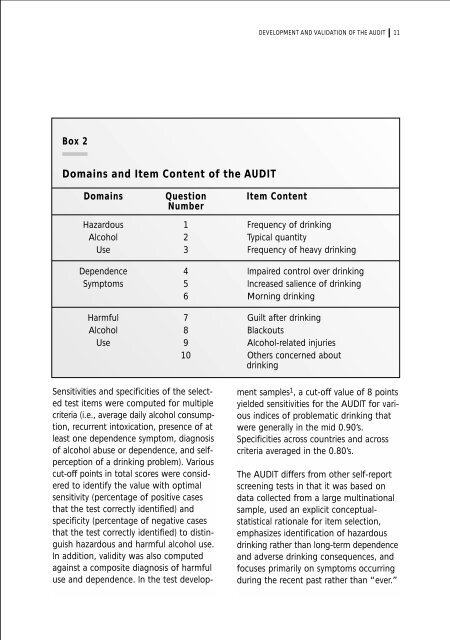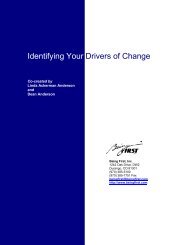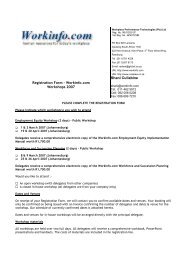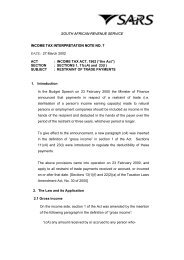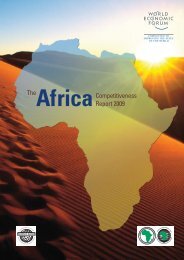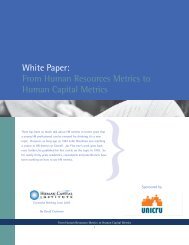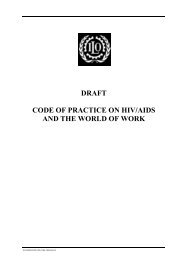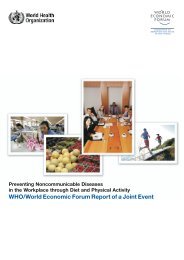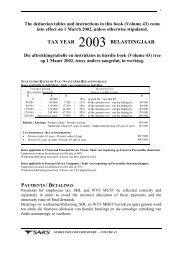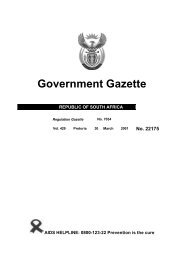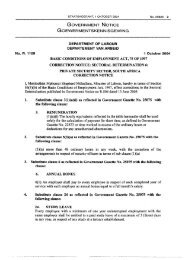The Alcohol Use Disorders Identification Test (World ... - Workinfo.com
The Alcohol Use Disorders Identification Test (World ... - Workinfo.com
The Alcohol Use Disorders Identification Test (World ... - Workinfo.com
Create successful ePaper yourself
Turn your PDF publications into a flip-book with our unique Google optimized e-Paper software.
DEVELOPMENT AND VALIDATION OF THE AUDIT I<br />
11<br />
Box 2<br />
Domains and Item Content of the AUDIT<br />
Domains Question Item Content<br />
Number<br />
Hazardous 1 Frequency of drinking<br />
<strong>Alcohol</strong> 2 Typical quantity<br />
<strong>Use</strong> 3 Frequency of heavy drinking<br />
Dependence 4 Impaired control over drinking<br />
Symptoms 5 Increased salience of drinking<br />
6 Morning drinking<br />
Harmful 7 Guilt after drinking<br />
<strong>Alcohol</strong> 8 Blackouts<br />
<strong>Use</strong> 9 <strong>Alcohol</strong>-related injuries<br />
10 Others concerned about<br />
drinking<br />
Sensitivities and specificities of the selected<br />
test items were <strong>com</strong>puted for multiple<br />
criteria (i.e., average daily alcohol consumption,<br />
recurrent intoxication, presence of at<br />
least one dependence symptom, diagnosis<br />
of alcohol abuse or dependence, and selfperception<br />
of a drinking problem). Various<br />
cut-off points in total scores were considered<br />
to identify the value with optimal<br />
sensitivity (percentage of positive cases<br />
that the test correctly identified) and<br />
specificity (percentage of negative cases<br />
that the test correctly identified) to distinguish<br />
hazardous and harmful alcohol use.<br />
In addition, validity was also <strong>com</strong>puted<br />
against a <strong>com</strong>posite diagnosis of harmful<br />
use and dependence. In the test development<br />
samples 1 , a cut-off value of 8 points<br />
yielded sensitivities for the AUDIT for various<br />
indices of problematic drinking that<br />
were generally in the mid 0.90’s.<br />
Specificities across countries and across<br />
criteria averaged in the 0.80’s.<br />
<strong>The</strong> AUDIT differs from other self-report<br />
screening tests in that it was based on<br />
data collected from a large multinational<br />
sample, used an explicit conceptualstatistical<br />
rationale for item selection,<br />
emphasizes identification of hazardous<br />
drinking rather than long-term dependence<br />
and adverse drinking consequences, and<br />
focuses primarily on symptoms occurring<br />
during the recent past rather than “ever.”


